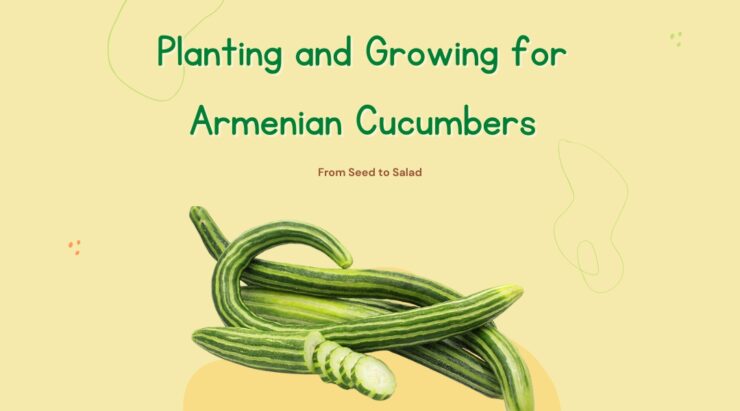Armenian cucumbers, also known as yard-long cucumbers, are a delicious and nutritious addition to any home garden. They are easy to grow and require little maintenance, making them an ideal choice for both beginner and experienced gardeners. In this guide, we will provide step-by-step instructions on how to plant and grow Armenian cucumbers, including selecting the right location, preparing the soil, planting the seeds, and caring for the plants as they grow.
We will also discuss common problems and pests that can affect Armenian cucumber plants, as well as tips for harvesting and storing the cucumbers for maximum freshness and flavor. Whether you are a seasoned gardener or just starting out, this guide will give you everything you need to know to grow a bountiful crop of delicious Armenian cucumbers.
Preparation
Planting and Growing Armenian cucumbers requires careful preparation. Make sure your soil is well-draining and nutrient-rich, and amend it with compost if needed. You should also consider adding a trellis or other support structure to your garden to help the cucumbers grow vertically and reduce the spread of diseases. Finally, select a variety of Armenian cucumbers that is best suited for the climate you live in.
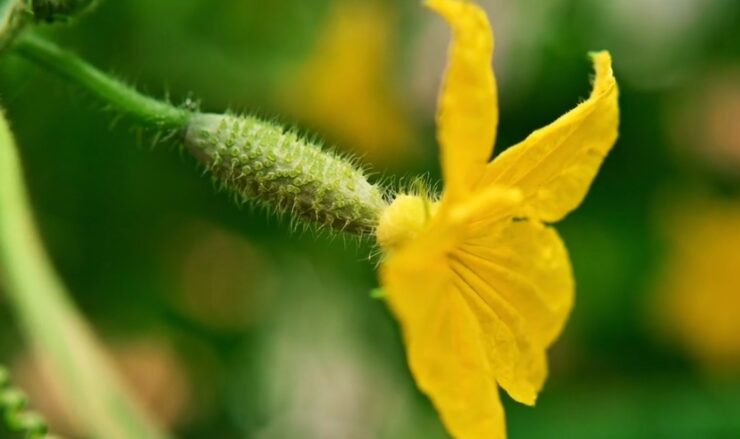
Select the right variety
When selecting the right variety of Armenian cucumber for planting, consider when and how it will be used. The flavor and texture will vary between the different varieties—some are more suited to raw eating while others may be best when cooked. When selecting the most suitable type, consider your plans for harvesting and use.
When beginning your search for the best variety, look for those that are resistant to common diseases affecting them including powdery mildew, scab, and downy mildew. Diseases can affect any variety so it is important to practice proper maintenance techniques which include crop rotation, weeding regularly, and avoiding overcrowding of plants. The typical growing season is around 64 days so pick varieties with an appropriate harvesting date in relation to when you’d like them to ripen on your garden plot.
Choose the right location
Before you start planting, it’s important to choose the ideal location. They prefer warm temperatures, so select an area with full sun exposure and well-drained soil. It’s also important to provide plenty of air circulation, as this can help prevent disease development. Select an area that receives at least 6 hours of light per day. If you have space and an ideal environment, it is best to allow a minimum of 4 feet between each row to ensure adequate airflow and root room for your cucumbers.
Prepare the soil
It is important to prepare the soil for the best results. The soil should be loose and well-draining for proper growth. In general, cucumbers prefer richer, loamy soil with lots of organic matter such as compost. The pH of the soil should be between 6.0 and 7.0 for optimal growth.
To improve drainage and make sure that your Armenian cucumber plants are receiving enough nutrients, you should incorporate aged manure or compost into your garden bed before planting. It is also recommended to use a fertilizer formulated specifically for cucumbers to make sure that they have access to all necessary nutrients throughout their growing season.
After preparing the soil, you are now ready to plant!
Planting
Planting them is a relatively easy task. You can start by selecting a location with good drainage and soil that is rich in organic matter. You will then need to prepare the soil for planting by working a layer of compost into the top 6-8 inches. Make sure to remove any weeds from the area and rake the soil to ensure it’s evenly distributed and free of clumps.
Once the soil preparation is completed, it’s time to start planting the cucumbers.
Plant the seeds
Planting and growing them is easy provided you have the right environment. Choose a location in your garden that receives full sun and has well-drained soil. They will tolerate partial shade, but yield best in full sun. Depending on the climate where you live, Armenian cucumber planting should be done after the danger of frost is gone and soil temperatures are above 60°F (15°C).
Armenian cucumbers can also be grown in large pots or containers. Fill a container with potting mix up to about 1 inch from its rim. Place two seeds in each hole, about an inch deep, and firm the soil around them afterward. Keep the container moist but not soggy to ensure the seeds germinate quickly and the seedlings get plenty of moisture when they begin to grow. You can thin out excess seedlings if there are too many, leaving only one or two per pot with consistent watering once they have emerged from the ground.
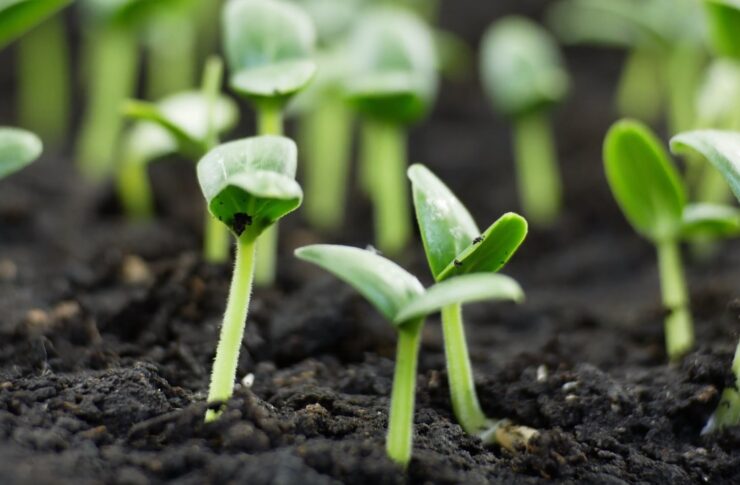
Water the seedlings
Once the seeds have been planted in the soil, it is important to make sure that the soil is kept moist. Watering should be done on a regular basis so that the cucumbers can grow deep roots. When watering, make sure to keep the foliage of the plants dry. This can be done by keeping a distance between the surface of soil and foliage when watering so that water does not settle onto their leaves.
Additionally, mulching around your cucumbers will conserve water in your soil and help vital nutrients stay in place for your plants to feed from. The mulch should be applied at least 2 -3 inches thick comprising pine needles or composted materials and should just rest around stems and leaves but not touch them directly.
Provide support for the vines
They tend to produce extra-long vines, so it’s important to give them plenty of space to sprawl. Provide support for the vines and leaves either by growing up a trellis or a stake in the center of the plant. Place at least two or three stakes about six inches deep into the soil, spacing them so that each vine has access to support.
Connect overhead wires from stake to stake with garden twine, then carefully attach each cucumber vine on either side of the string and guide them over it as they grow. This will allow vines to curl around themselves and create an elegant support structure while allowing full sun exposure to keep cucumbers ripening evenly.
Care

Growing Armenian cucumbers requires regular care and maintenance to ensure a bountiful harvest. You will need to water and fertilize your plants regularly and provide them with enough light and space to grow. Pruning your plants and keeping pests away will also contribute to a healthy and prosperous garden.
Let’s dive into the details of growing Armenian cucumbers.
Fertilize the soil
Fertilizing the soil with a balanced fertilizer will provide them with the extra nutrients they need to thrive and produce fresh, flavorful vegetables. For best results, it is recommended to use an all-purpose or low-nitrogen fertilizer that is designed specifically for vegetable planting.
When applying the fertilizer, simply spread it evenly over the soil around each plant, taking care to avoid direct contact with the stems and leaves. The recommended rate of application is usually listed on the package directions or label.
Water regularly
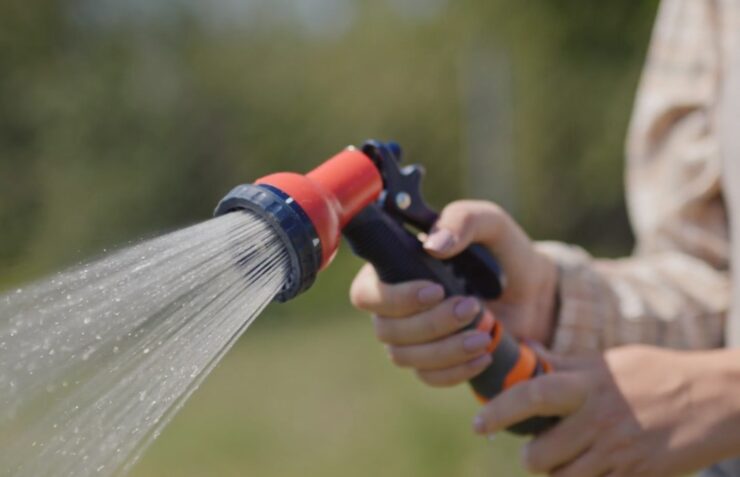
Substantial and consistent watering is important for successful cucumber growth. Ideally, they should receive 1-2 inches of water per week either from rainfall or irrigation. Water at the base of the plant rather than from above to avoid fungal diseases. Keep the soil consistently spray to avoid dry, cracked fruits that can form from too much sun exposure.
During hot weather considers using a soaker hose or sprinkler irrigation system to make sure your plants get enough water without wasting any of it. Doing this will also help keep blossom end rot at bay, which is a common result of inconsistent watering practices.
Control pests and diseases
They are relatively resistant to pests and diseases, as long as preventive measures are taken. To keep the planting area free from pests and diseases, we recommend keeping it free from clutter. Remove dead plant material, weeds, and pests such as aphids or spider mites before they can settle or spread.
Be sure to regularly inspect the leaves of your cucumbers for any signs of damage or infection. Additionally, avoid overcrowding and ensure that your plants have good air circulation by pruning and removing extra branches. If you notice any signs of disease, treat them immediately with an appropriate fungicide or insecticidal soap.
Additionally, you can use beneficial insects like ladybugs to protect your plants from harmful insects. Make sure that your garden has plenty of water; cucumbers needs regular irrigation in warm weather to remain healthy and happy. The soil should be kept moderately moist at all times; too little or too much moisture will not yield favorable results in terms of pest/disease protection either way. Lastly, adding an appropriate layer of mulch can help provide some additional protection and irrigation control during drier periods of the year.
Harvesting
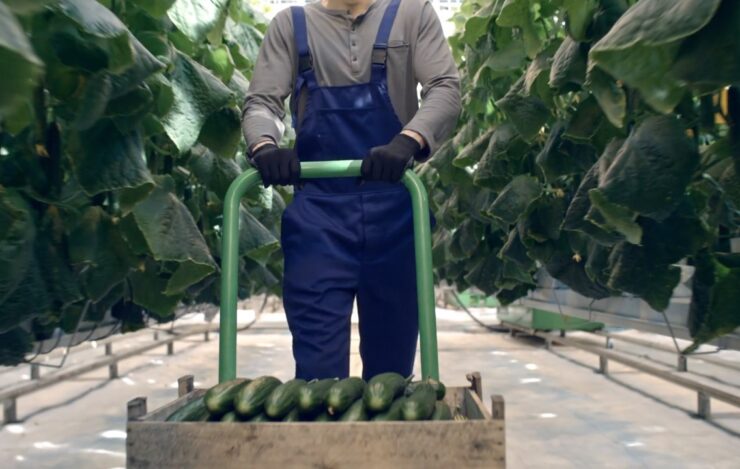
When it’s time to harvest the Armenian cucumbers, look for ones with shining and slightly thinner skin. When they are about 6 inches long and over 1 inch in diameter you can go ahead and harvest them. The cucumber should have glossy, bright, smooth skin. The best way to harvest them is by snipping or cutting off the stem with a pair of scissors or garden shears.
Monitor the cucumbers
Once they start growing, it is important to monitor them daily for any signs of disease, pest infestation, and harvesting. Check the underside of the leaves for signs of mildew, mites, or aphids as these could be indications of infestations. Treat the affected plants with neem oil and insecticidal soap as necessary. Keep a close eye on the swelling or discoloration which can indicate over-ripening.
To maximize the flavor and quality of your harvest, pick them when they are young and at least 6 inches long. Be sure to use sharp kitchen scissors and cut cleanly across the stem with each pick. Regular picking encourages us to keep producing fruit throughout its growing season while ensuring that you get fresh cucumbers all season long!
Pick the cucumbers at the right time
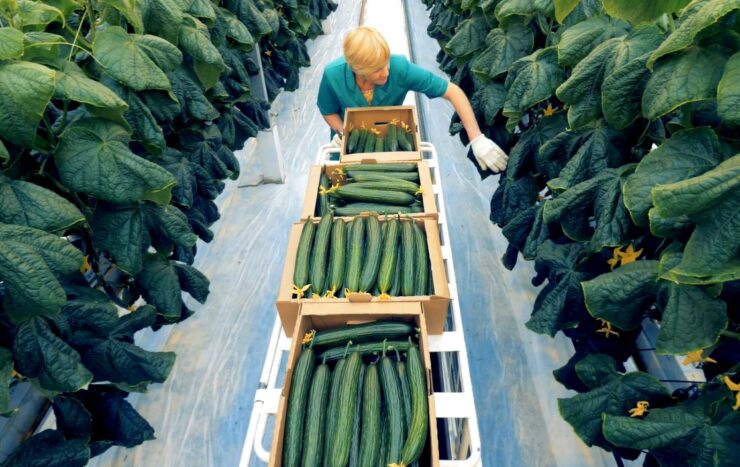
They should be harvested when they are plump and full, typically 6 to 8 inches long. If left on the vine too long, the pulp inside can develop a bitter taste and the skin may become tough. To ensure optimal ripening, check them every other day or so and remove those that are mature. Additionally, many gardeners opt to pick their cucumbers at an earlier stage of maturity in order to prevent any risk of over-ripening.
The best way to harvest is with a knife or scissors for a quick snip at least one inch from the stem end. This helps protect the health of each plant by enabling it to concentrate its growth on producing new flowers and fruits — not repairing cut stems that can cause disease, infection, or rot later in life. If you’re harvesting from flowering vines and want new fruit to grow further down the line, pick some unripe fruit just before removing ripe ones so that more pollination takes place for future growth.
For optimal health benefits, it is important to consume Armenian cucumbers as soon as possible after harvest for getting the most nutrition out of this little sweet veggie!
Store the cucumbers properly
They should be stored in a cool, dry place and should not be exposed to direct sunlight. If you have a refrigerator, this is a great place to store unpicked cucumbers. Make sure that the temperature is not lower than 45 degrees Fahrenheit in order to prevent damage.
You can also store them in an airtight container like a canning jar or plastic bag. Make sure that the container is completely sealed before storing it in the refrigerator or another dark and cool room of your house. Keeping them sealed will help to keep all of their nutrition intact and they will last several weeks this way even if you don’t cook them right away.
When washing cucumbers before eating, brush any dirt off with dry hands so that you don’t add too much moisture from washing them with water at first. Afterward, you can rinse off any remaining dirt particles with cold water for safety purposes before consuming or cooking them up!
Troubleshooting
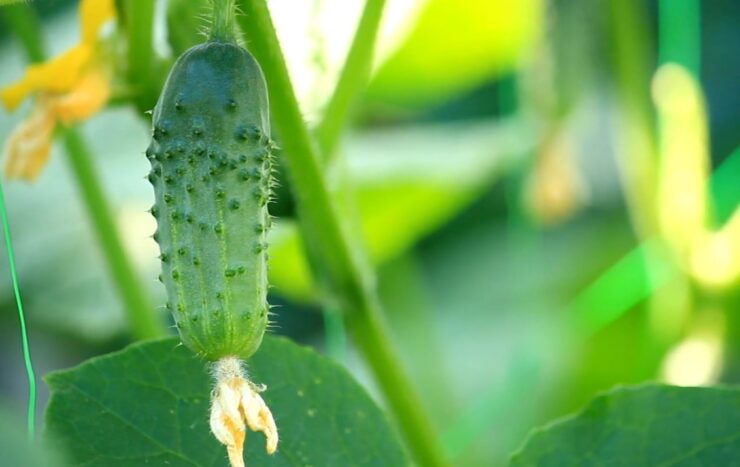
You may run into various problems that prevent your plants from producing as intended. Here, we will be discussing the common troubleshooting techniques that can be used to identify and address any issues that may arise when planting and growing Armenian cucumbers.
Identify common problems
Despite their hardy nature, there can be problems with planting and growing them. Common issues include pests and diseases, soil conditions, overwatering and underwatering.
Pests and Diseases: Common pests that attack cucumbers include aphids, slugs, mites, cucumber beetles, and squash bugs. To prevent infestations, use garden covers or chemical pesticides when available. Diseases that affect Armenian cucumbers include powdery mildew, scab, and Fusarium wilt. Remove affected foliage and use fungicide when needed to keep plants healthy.
Overwatering/Underwatering: Too much or too little water can lead to various problems including poor yields of fruits or wilting of leaves – it is important not to overwater at any time during the season but make sure your plants receive adequate hydration – water several times during the week in dry periods but avoid over-watering; look out for signs of leaf yellowing which is an indication of underwatering (too little water).
Take preventive measures
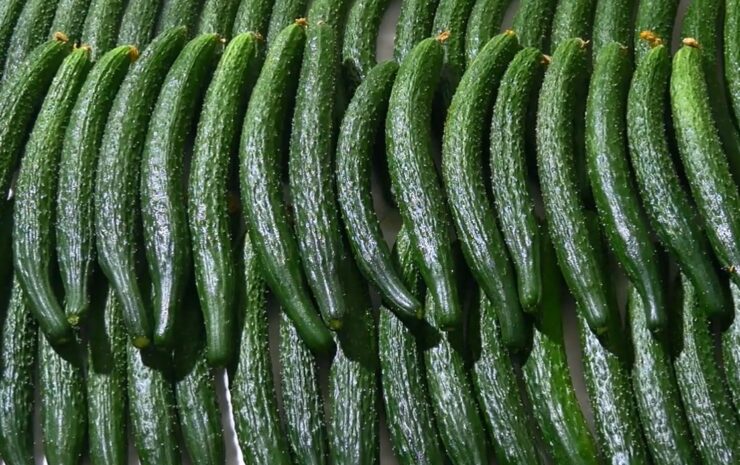
When selecting seeds, opt for disease-resistant varieties if possible. Additionally, prepare the soil in advance by amending it with compost and removing previous crops that may contain disease-causing pathogens.
To avoid problems with pests, such as aphids and cucumber beetles, consider using a floating row cover while the plants are still young. Furthermore, as the cucumbers start to grow and become large enough to be damaged by insect pests or predators, like small mammals or birds, use physical barriers around the plants that can keep them away from the garden area. Additionally, you may also want to try various types of repellents.
It is essential to ensure proper watering of all plants in your garden. Too much water can cause mold growth on fruits and vegetables, while too little water can lead to poor yields or wilting of leaves and stems. The best way to monitor your watering practices is through soil moisture testing – probing a finger into the ground can help you measure moisture levels in the soil up until four inches deep from ground level. An accurate assessment of how much water you should be providing will help you avoid over or under-watering your plants.
Treat existing problems
When you spot any signs of trouble – brown spots, drooping leaves, wilting, or anything else that seems unusual – you’ll need to take swift action. The most important thing is to identify what’s causing the problem. Possible causes of damage can range from pests or disease to an incorrect watering schedule and/or too much direct sunlight.
Here are a few steps to follow when a problem arises:
- Look carefully at your cucumber plant and identify the issue if possible.
- Check if the problem might be due to pests such as aphids, spider mites, or cucumber beetles on the leaves or other parts of the plant; look for webbing or eggs near the base of the vine and long leaf stems.
- Examine your watering schedule; cucumbers need one inch of water per week and like consistent moisture levels throughout their growing season. (If it’s too little water or too much water that can cause stunted growth.)
- Inspect for fungal growths such as downy mildew which results in discolored foliage typically on both sides of the leaves; note any wilting as well which would indicate root rot caused by overwatering.
- Make sure your plants are receiving enough direct sunlight (at least six hours per day); lack of sun can limit fruit production and cause poor-tasting cucumbers with weak texture and flavor because some vitamins aren’t formed properly when insufficient light is present.)
- Move potted plants indoors in cold weather for proper care (if needed).
- Treat affected areas with an appropriate fungicidal spray or remove affected plants entirely if needed. (Discard them into trash bins safely away from the garden area)
Once you’ve identified the problem and taken corrective action, continue monitoring your plants daily until they are back in good health! Cucumbers are tough but require attention to keep up with regular maintenance – prune vines, pick off any dead fruit/leaves, and provide proper fresh soil each season – this will help keep them safe all summer long!
FAQs

How deep should I plant Armenian cucumber seeds?
Plant the seeds about 1 inch deep in the soil.
How far apart should I space Armenian cucumber seeds when planting?
Space Armenian cucumber seeds about 12-18 inches apart.
How often should I water Armenian cucumber plants?
Water them regularly, keeping the soil moist but not waterlogged.
How long does it take for Armenian cucumber plants to produce fruit?
They typically take about 60-70 days to produce fruit after planting the seeds.
How do I know when Armenian cucumbers are ready to harvest?
They are ready to harvest when they reach a length of about 12-18 inches and are firm to the touch.
How do I prevent common pests and diseases from affecting my Armenian cucumber plants?
To prevent pests and diseases, keep the plants healthy and well-watered, and remove any diseased or infected plants immediately.
How often should I fertilize Armenian cucumber plants?
Fertilize them once a month with a balanced fertilizer.
Can I grow Armenian cucumbers in containers?
Yes, they can be grown in containers as long as the container is at least 12-18 inches deep.
Do Armenian cucumbers need support as they grow?
Yes, they need support as they grow, such as a trellis or stake.
Can Armenian cucumber seeds be saved for future planting?
Yes, these seeds can be saved for future planting if they are properly harvested and stored in a cool, dry place.
How long do Armenian cucumber plants typically live?
They are annual plants, meaning they typically live for one growing season and then die off.
Conclusion
In conclusion, growing Armenian cucumbers is a rewarding and relatively easy task that can provide a delicious and nutritious addition to your garden. By following the steps outlined in this guide, you can ensure that your plants thrive and produce a bountiful crop of tasty cucumbers.
Remember to choose a sunny location, prepare the soil properly, water the plants regularly, and watch out for common pests and diseases. With a little patience and care, you can enjoy the sweet and juicy flavor of freshly grown Armenian cucumbers right from your own garden. Happy gardening!

